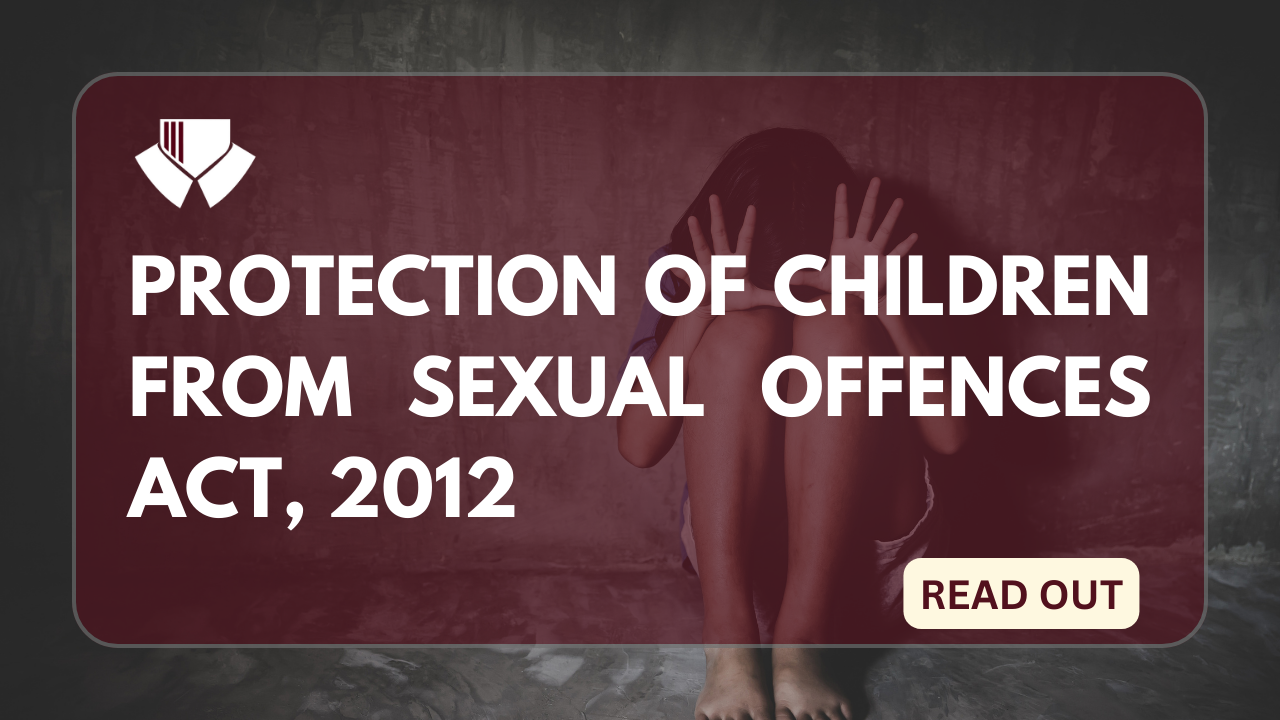This blog is written by Spoorthi Ramesh, a law student.
Introduction
“The true character of a society is revealed in how it treats its children” – Nelson Mandela
Childhood is a vital phase of life, as it plays a crucial role in shaping individuals into adults. The awful reality of child sexual abuse casts a gloomy shadow in a world where it is imperative to protect children’s innocence at all costs. Child sexual abuse is a seriously traumatic experience that influences the victim’s psychological health for the rest of their lives. According to the broad interpretation of Art 21 of the Constitution, the protection of children by the state is guaranteed to Indian Citizens. This is also mandated as India is a signatory to the UN Convention on the Rights of the Child.
The Indian Penal Code contains certain provisions that deal with child abuse. However, there are certain shortcomings, such as:
- Section 375 discusses rape. It does not provide protection to male victims. Further, it doesn’t deal with any other form of sexual penetration except peno-vaginal intercourse.
- Only victims who have been violated by their attacker’s sex act are covered by Section 377. It excludes the sexual exploitation of youngsters.
Therefore, there was a need for separate legislation to deal with this societal issue. The POCSO Act was enacted to establish a thorough legal framework for safeguarding children from becoming victims of sexual abuse and sexual exploitation. It signifies the nation’s commitment to protecting the welfare and dignity of its youngest citizens.
Recognizing the pressing need to combat this societal issue, the legislature enacted the Protection of Children from Sexual Offences Act, also known as the POCSO Act. It was enacted on June 19th, 2012, by the Women and Child Development Ministry and was enforced on November 14th, 2012. Before the existence of the POCSO Act, the Goa Children’s Act of 2003 was the only legislation that dealt with the subject of child abuse. This article provides a bird’s-eye view of the POCSO Act.
Legislative History
The following section of this article elaborates on the legislative history of the POCSO Act. The various milestones along the legislative journey of the Act are as follows:
Preparation and Recommendation:
The preparation for the enactment of the Act commenced with shining a light upon the immediate need to address child sexual abuse. Multiple child rights organizations, legal luminaries, and concerned persons emphasized the loopholes present in the law pertaining to child protection. There were various discussions that took place that laid down the foundation for the draft of a new piece of legislation specifically covering the subject of child sexual offenses.
Committee Formulation:
In 2005, the Ministry of Women and Child Development incorporated a committee to inspect the provisions concerning child protection and come up with changes or a new legislation to address the issue. The committee was chaired by Dr. (Justice) V.S. Malimath, they worked tirelessly to draft a comprehensive piece of legislation in order to cover all the aspects of child sexual abuse.
Report and Recommendations:
In 2007, the committee presented a report which suggested the creation of new legislation solely focused on addressing child sexual offenses. The report highlighted the need and importance of child-friendly legal methods, strict punishment of the offenders, and setting up of special courts to resolve disputes relating to child sexual abuse.
Enactment of the POCSO Act:
The Indian government in the year 2011 introduced the Protection of Children from Sexual Offences Bill in the parliament. There were discussions and revisions in both the houses of the parliament before it was passed.
Presidential Assent and Enactment:
The POCSO act received assent from the President of Indian on 19th June 2012. Therefore, the act became the law, this was a significant milestone in combating child sexual abuse.
Implementation and Amendments:
The Act was enforced on November 14th, 2012. Since then, there have been relentless efforts to maximize its effectiveness and take into account its weak points that come up during the course of implementation. Changes have been suggested to resolve evolving hurdles and ensure that the legislation remains relevant to its objectives.
Object and Need of the Act
The Protection of Children from Sexual Offences Act’s main goal is to establish a strong legal framework that protects children from sexual exploitation and abuse. The statute aims to protect children’s safety, mental health, and dignity by clearly defining numerous sexual offenses against them. The Act provides provisions for creating special courts where child witnesses can testify in a welcoming and non-threatening setting.
The extent of the Application of the Act
There are five types of sexual offenses recognized under the act. They are as follows:
- Penetrative sexual assault under section 4 of the act is punishable by up to life in prison.
- Aggravated penetrative sexual assault under section 6 of the act is punishable by up to life in prison.
- Sexual assault under section 8 of the act is punishable by up to five years in prison.
- Aggravated sexual assault under section 10 of the act is punishable by up to seven years.
- Sexual harassment under section 12 of the act is punishable by up to three years in prison.
Provisions and Salient Features of the Act
Some of the provisions and the salient features provided under the Act are as follows:
Clear Definitions of Offenses:
The Act provides precise definitions of various sexual offenses against children, ensuring clarity and specificity in identifying prohibited acts. Section 7 of the Act defines “sexual assault” on a child.
Special Courts:
Special courts are established to exclusively handle cases under the POCSO Act, aiming to expedite trials and ensure child-friendly legal proceedings. Section 28: Designates special courts for the trial of offenses under this act.
Child-Friendly Procedures:
The act emphasizes child-friendly procedures during investigations and trials, focusing on minimizing trauma and protecting the child’s dignity. Section 33 elaborates on the Special procedures that is needed to be followed for recording the statement of the child and the powers assigned to the special courts.
Confidentiality and Privacy:
The identity of the child victim is to be protected throughout the legal process to prevent social stigma and trauma. Section 23 works in this direction by Prohibiting the disclosure of the child’s identity.
Punishments:
Stringent punishments are prescribed for different offenses to deter potential offenders and ensure accountability. Sections 4, 6, 8, 10, 12, 14, 15 and 16 specifies punishments for different categories of offenses.
No Bail for Offenders:
The act mandates that an accused person should not be granted bail if there is a reasonable belief that they are guilty of committing an offense under the act. Section 18 mentions the provisions related to grant of bail.
Reporting Obligations:
The act places an obligation on individuals, including medical practitioners, to report cases of child sexual abuse. Section 19: Reporting of offenses.
Recording of Testimonies:
The act ensures that the testimony of the child is recorded in a sensitive and non-threatening manner. Section 24 of the act deals with recording of the statement of the child.
Conclusion
Sensitizing the public about child sexual abuse is urgently needed so that there is no hesitation in reporting these crimes. In order to eliminate any possibility of carelessness on their side, the investigative authorities should be well-trained, and experts like medical practitioners involved in the phases of investigation and trial should be effective. The POCSO Act already makes the process kid-friendly, and judicial officials, magistrates, and police officers should adopt this strategy in order for the child victims to have faith in them.
By explicitly defining offenses, establishing stringent penalties, and instituting child-friendly procedures, the Act ensures a balanced approach that upholds justice while prioritizing the unique needs of child victims. The Act’s gender-neutral stance recognizes that both boys and girls can be victims, ensuring equitable protection for all children.


